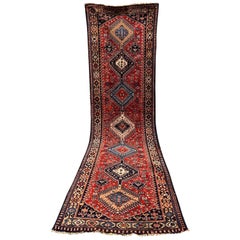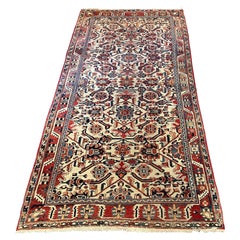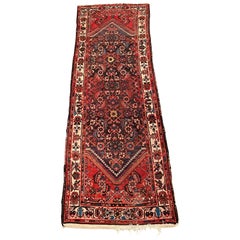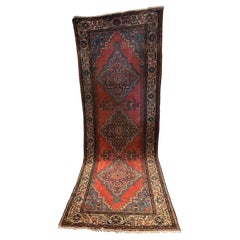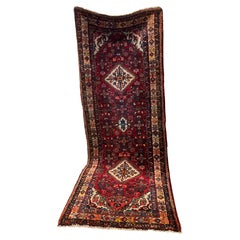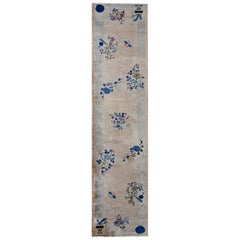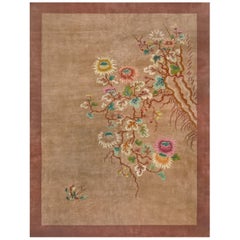George Davis Fine Arts & Antiques Gallery Chinese and East Asian Rugs
to
Width
to
Length
to
5
5
5
5
5
5
5
5
5
5
5
5
Persian Hamadan Design Runner, Early 20th Century
Located in Savannah, GA
Persian Hamadan Design Runner, Early 20th Century
Category
Early 20th Century Persian Chinese and East Asian Rugs
Materials
Wool
Persian Bakhtiari Design Runner, Early 20th Century
Located in Savannah, GA
Persian Bakhtiari Design Runner, Early 20th Century
Category
Early 20th Century Persian Chinese and East Asian Rugs
Materials
Wool
Persian Hamadan Design Runner, Early 20th Century
Located in Savannah, GA
Persian Hamadan Design Runner, Early 20th Century
Category
Early 20th Century Persian Chinese and East Asian Rugs
Materials
Wool
Persian Hamadan Design Runner, Early 20th Century
Located in Savannah, GA
Persian Hamadan Runner, Early 20th Century
Category
Early 20th Century Persian Chinese and East Asian Rugs
Materials
Wool
Persian Hamadan Design Runner, Early 20th Century
Located in Savannah, GA
Persian Hamadan Design Runner, Early 20th Century
Category
Early 20th Century Persian Chinese and East Asian Rugs
Materials
Wool
Related Items
Amazing Early 20th Century Antique Chinese Art Deco Runner
Located in Chicago, IL
An amazing early 20th century Chinese Art Deco runner with a beautiful pale champagne colored field surrounded by a wide grey border. Auspicious peonies dot the field with potted vases...
Category
Vintage 1920s Chinese Art Deco Chinese and East Asian Rugs
Materials
Wool
Early 20th Century Chinese Rug
Located in West Hollywood, CA
This traditional hand-woven Chinese rug has a café-au-lait field with meandering rust vine issuing polychrome sunflowers and delicate stylized leaves, in a plain rust red border.
Category
Early 20th Century Chinese Chinese and East Asian Rugs
Materials
Wool
Early 20th Century Antique Art Deco Chinese Wool Runner
Located in Norwalk, CT
Beautiful antique Chinese Art Deco runner, hand knotted wool with a navy blue field, tan frame in a subtle all-over Classic Chinese floral design.
This rug measures: 2'6" x 4'10".
...
Category
Early 20th Century Chinese Art Deco Chinese and East Asian Rugs
Materials
Wool
Early 20th Century Antique Art Deco Chinese Wool Runner
Located in Norwalk, CT
Beautiful antique Chinese Art Deco runner, hand knotted wool with a navy blue field, tan frame and multi-color accents in a subtle all-over Classic Chinese floral design.
This rug m...
Category
Early 20th Century Chinese Art Deco Chinese and East Asian Rugs
Materials
Wool
Early 20th Century Persian Bakhtiari Rug
Located in Chicago, IL
A wonderful early 20th century Persian Bakhtiari rug with a pattern of alternating cypress trees, rose bushes, and myriad trees with birds, surrounded by a complementary border with ...
Category
Vintage 1930s Persian Tribal Persian Rugs
Materials
Wool
Early 20th Century Chinese Art Deco Runner
Located in Chicago, IL
A wonderful early 20th century Chinese Art Deco runner with alternating auspicious floral and Shou character medallions set against an indigo background, and surrounded by a beautifu...
Category
Vintage 1920s Chinese Art Deco Chinese and East Asian Rugs
Materials
Wool
Early 20th Century Chinese Art Deco Runner
Located in Chicago, IL
This early 20th-century Chinese Art Deco runner is a stunning blend of elegance and rich color. The champagne-colored field exudes a subtle, luminous quality, beautifully offset by a...
Category
Vintage 1920s Chinese Art Deco Chinese and East Asian Rugs
Materials
Wool
Early 20th Century Persian Bakhtiari Rug
Located in Chicago, IL
This early 20th-century Persian Bakhtiari rug showcases the bold geometry and rich palette that define the finest tribal weaving traditions of western Iran. Handwoven by the Bakhtiar...
Category
Vintage 1920s Persian Tribal Persian Rugs
Materials
Wool
Early 20th Century Khotan Carpet
Located in New York, NY
Early 20th century Khotan carpet, East Turkestan.
Category
Early 20th Century Chinese Chinese and East Asian Rugs
Materials
Wool
Early 20th Century Chinese Peking Runner Carpet ( 2'6" x 12' - 76 x 366 )
Located in New York, NY
Early 20th Century Chinese Peking Runner Carpet ( 2'6" x 12' - 76 x 366 )
Category
Vintage 1920s Chinese Chinese and East Asian Rugs
Materials
Wool
Fantastic Early 20th Century Hamadan Runner
Located in Chicago, IL
A fantastic early-20th century Persian Hamadan rug with an all-over mirrored trellis pattern of flowers and vines, woven in crimson, pink, light indigo, and white colored wool, on a ...
Category
Vintage 1940s Persian Heriz Serapi Persian Rugs
Materials
Wool
Rare Early 20th Century Chinese Peking Runner
Located in Chicago, IL
A rare and sweet early 20th century Chinese Peking runner with a field containing an all-over patter of petite flowers woven in pale pinks, greens, and indigos against a light indigo background. The border is unusual too, with a similar petite floral pattern with large Buddhist...
Category
Vintage 1940s Asian Chinoiserie Chinese and East Asian Rugs
Materials
Wool
